Wellness
The latest Wellness breaking news, comment, reviews and features from the experts at T3
Explore Wellness
-
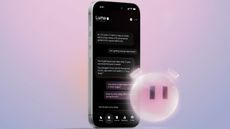
My favourite sleep app just got an AI-powered sleep coach – and I can’t wait to try it
Sleep Cycle just gave its app an AI upgrade that could drastically improve your sleep
By Bethan Morgan Published
-
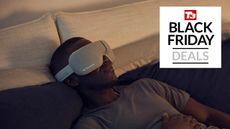
This Therabody eye mask helps me sleep at night – and it’s on sale for Cyber Monday
My favourite wellness product from the past year is cheaper than before
By Bethan Morgan Published
-

These 5 Black Friday mattress deals can save you $600 – discounts on Saatva, Purple, Leesa and more
Get up to $600 off on these cheap Black Friday mattress deals
By Bethan Morgan Published
-

This smart wearable acts as your own personal thermostat – and it looks great too
Embr’s new Wave 2 might look like a smartwatch but there’s much more to it
By Bethan Morgan Published
-
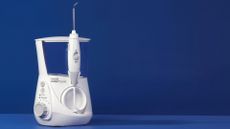
This Black Friday deal will make you smile all year and its 33% off right now
Waterpik's water flosser is one of the best options on the market and will keep your mouth clean for less
By Mat Gallagher Published
-

“Warm your feet or you won’t sleep!” – doctor explains how to keep feet warm during UK cold snap
Combat the UK’s cold snap with these quick feet warming tips
By Bethan Morgan Published
-

Silentnight Newbury 1000 Pocket Eco Pillow Top Mattress review: a supportive, plush option for the guest room
Be warned – the cosy pillow-top on this firm mattress might make visitors so comfortable they won’t want to leave
By Emily Peck Published
-

Therabody TheraFace Mask Glo review: a smarter, simpler take on LED skincare
The TheraFace Mask already had a strong reputation, so how well does the new Glo version perform? Let's find out
By Lizzie Wilmot Published
-
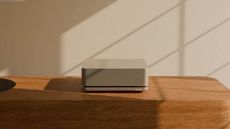
Ultrahuman Home gets major sleep upgrade and can even detect snoring
Ultrahuman Home can now track your sleep better than before
By Bethan Morgan Published
-
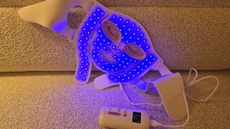
Renpho Artemis LED Light Soft Mask review: affordable, comfortable and effective LED therapy
This affordable LED face mask packs more lights than pricier rivals and promises serious skin perks – but does it deliver?
By Lee Bell Published
-

I'm a sleep expert – this is the trick I use to get out of bed when it's cold
This is the trick you need when you really don’t want to get out of bed
By Bethan Morgan Published
-

Best men’s fragrances and colognes 2025: find your signature scent or a meaningful gift
Find the best men's fragrances, including classics from Hugo Boss, Tom Ford, Chanel and more
By Bethan Morgan Last updated
-

The Philips OneBlade is the only beard trimmer you’ll ever need – and it’s now reduced for Black Friday
A firm favourite of ours has had a huge price cut ahead of next week
By Lizzie Wilmot Published
-
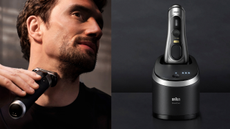
The Braun Series 9 Pro+ has been our top electric shaver for 1 entire year – here's why it's still our favourite
With its premium build and impressively close shave, the Braun Series 9 Pro+ remains one of the best electric shavers on the market
By Lizzie Wilmot Published
-

New Acqua di Parma Christmas collection is filled with gifts for the ones you really love
There's something for every taste here
By Sam Cross Published
-

3 tried and tested Black Friday mattress deals LIVE – big price cuts from Emma, OTTY, Eve and more
Save hundreds on a new sleep set-up with these Black Friday mattress deals
By Bethan Morgan Last updated
-

6 best boozy fragrances for men 2025: alcohol-inspired scents from Tom Ford, Givenchy and more
Who doesn’t want to smell like whiskey, right?!
By Bethan Morgan Published
-

Best mattress topper 2025: give your old bed a new lease of life
Find the best mattress toppers to make your old mattress softer, firmer, and more luxurious
By Bethan Morgan Last updated
-

Best bed in a box mattress 2025: the most convenient sleep upgrade around
Discover the best bed in a box mattresses, all rolled up, boxed and delivered to your door
By Bethan Morgan Last updated
-

I tested Prada Paradigme – clean, citrusy and gets the best compliments
If you love zesty, sharp scents, then Prada’s latest fragrance is for you
By Bethan Morgan Published
-

5 meditation apps you need to know about
Learn to regulate your nervous system and bring balance back into your life with these meditation apps
By Kat Bayly Published
-

‘Potato bed’ is going viral on TikTok – but can it actually help you sleep?
No, it doesn’t involve putting potatoes in your bed…
By Bethan Morgan Published
-

Laifen’s new hair dryer delivers incredible speed – and still costs less than most
The Laifen Neo is available to buy now
By Lizzie Wilmot Published
-

Best sleep headphones 2025: plug in, switch on and nod off
Buying Guide Find the best sleep headphones to help you drift off quicker and improve your sleeping habits
By Bethan Morgan Last updated
Buying Guide -

Shark Beauty re-introduces its viral LED face mask in stunning sage green colour
It’s now much easier for the design to appeal to everyone
By Lizzie Wilmot Published
-
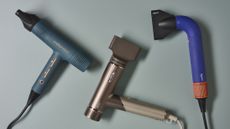
Best hair dryer 2025: quick and frizz-free drying for all hair types
Find our top picks from Dyson, Shark, ghd and more
By Lizzie Wilmot Last updated
-

Best massagers 2025: banish knots and soothe sore muscles
Find the best massagers to knead away aches and pains, boost circulation and relax after a long day
By Bethan Morgan Last updated
-
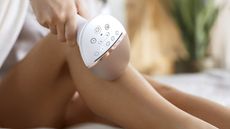
Best IPL hair removal machine 2025: banish unwanted hair with devices for men and women
Find the best IPL hair removal machines to banish hair with the power of light, meaning you never have to shave again!
By Bethan Morgan Last updated
-

Best yoga mat 2025: outstanding mats for grip, comfort, style and versatility
Find the best yoga mats on the market for your yoga or Pilates practice, including rubber, PVC, cork and sustainable options
By Bethan Morgan Last updated
